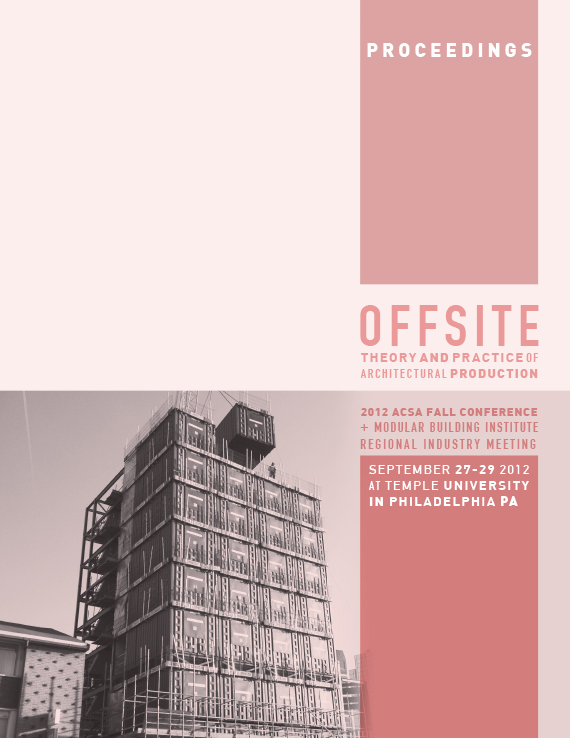Author(s): Samuel Mortimer
In 1933, the Tennessee Valley Authority created a model community aspart of the Norris Dam construction project. Built entirely anew, the town ofNorris was designed around the principles of the Garden City and was envisionedas a self-sustaining utopian community. A key feature of this NewDeal village was the Norris House, a series of home designs built for modern,efficient, and sustainable living. New technologies and prefabricatedelements were quietly integrated into aesthetically pleasing, vernacularlyinspiredhomes, allowing residents to immediately identify with the newstructures. Despite their familiar aesthetic, the introduction of electricityand indoor plumbing revolutionized the way residents of the TennesseeValley would dwell. In light of the 75th anniversary of the Norris Project,a university design/build team reinterpreted the Norris paradigm and createda New Norris House – a sustainable home designed to address theconstraints and imperatives of the 21st century. Partnering with a largemodular home builder, the academic project team completed the home ina design/build setting over the course of 2.5 years. Currently, the project isin a demonstration and evaluation phase, with qualitative and quantitativeassessments being collected around the residency of two live-in subjects.The project received LEED for Homes Platinum certification, and numerousdesign awards, including the EPA’s P3 Award, a Residential Architect MeritAward for single-family housing, and an AIA East Tennessee Honor Award.This paper seeks to use the completed New Norris House project and its ongoingevaluation as a case study for future built works. Academic collaborationwith the modular partner raised several key questions and difficulties—largely related to critical path and quality constraints. It became apparentin the design phase that not all work could be completed in the modularhomebuilder’s factory; custom finishes (interior and exterior), and specializedMEP systems (home and landscape) were rather completed on-site.Prefabrication of the student design pushed the modular builder to severalof its limits and one-off production tested the capacity of laborers to performat levels (speed and quality) equal to that of their standard product.This paper will evaluate the project team’s ability to challenge and adaptto existing manufacturing and installation systems. What design decisionsmight have permitted greater factory production and what trade-offs couldhave been made to this end? Was there inherent value in the give/take of theoff-site vs. on-site production? What limitations do modular home buildershave which could more easily facilitate one-off productions?As both a student member of the original design team and later as a researcher/instructor overseeing the project’s completion and evaluation, Ihave been privileged to a unique perspective. I will discuss the nature ofthe academic and industry partnership and how the home has acted as a vehicleto apply new technologies and techniques, explore policy limitations,and gather real-world marketing feedback. These applications may not havebeen possible without academic/industry partnership, and all have the opportunityto provide tangible benefits in the form of new products, services,and academic models.
Volume Editors
John Quale, Rashida Ng & Ryan E. Smith
ISBN
978-0-935502-85-5

 Study Architecture
Study Architecture  ProPEL
ProPEL 
